Headlines of The Day
Budget 2022-23: Expectations of the medical devices industry
In light of the continuing pandemic, health at present has become the biggest priority for people and nations alike. In India, the pandemic exposed several gaps in the existing healthcare infrastructure however, the government has been quick to come with reforms and policy level changes to address the issues.
When it comes to policy level, the Indian government issued notification about retail sale of drugs at door step, issued telemedicine guidelines, launched production linked incentive (PLI) schemes for domestic manufacturing of critical Drug Intermediaries (DIs), Key Starting Materials (KSMs), Active Pharmaceutical Ingredients (APIs), and medical devices. To increase competitiveness and improve availability and affordability of medical devices, a scheme for creation of four Medical Device Parks was also announced. These launches were in line with the Atma Nirbhar Bharat which attracted domestic and foreign investors to participate in this industry.
The government of India also allocated funds to promote the existing ‘National Health Mission’ which is aimed at developing primary, secondary and tertiary healthcare system in the country. Apart from this, another path breaking initiative by the government which will mostly boost the domestic healthcare industry is the credit incentive program worth Rs. 50,000 crore. Under this program, companies can leverage the fund to expand hospital capacity or medical supplies. The program emphasizes on strengthening healthcare infrastructure specifically in the rural areas during COVID-19 crisis. It is also one of the safest credit program since the guarantor in this case is the government itself.
On January 16, 2021, the Prime Minister of India inaugurated vaccine drive for two domestically produced vaccines. Despite all these efforts, the healthcare industry is still in need of better support for sustained growth.
Here we spoke to a few of the industry players from various segments to know what they have been expecting from the year ahead.

Thomas John
MD,
Agappe
The COVID 19 pandemic and its after effects has bought in to focus the healthcare sector and the consequent effects on the other sectors. An increase in Government health care spend by 1%to 2% would considerably reduce the expenditure in the hands of a citizen by at least 30% points of overall health care spend. The Government’s Healthcare system primarily focusses on providing basic health care facilities through its Primary Health Care Centers with limited secondary and tertiary units, this leads to overcrowding in most Govt facilities. While the private sector has most of the secondary and tertiary units in the Tier I , II and III . COVID pandemic has significantly weakened the economic status of our citizens. Further, the insurance companies have been resorting to high premiums for medical insurance for individual citizens, this has led to large population of people being not covered by insurance. Lack of coverage leads to people being exposed to the risk of expensive medical bills in case of an emergency.
Insurance companies cite limited visibility into patients’ medical records and no standardised treatment protocols for high premiums. Also insurance providers in India do not cover the costs of diagnostics or insist on testing before issuing a policy. As a bulk of the healthcare in India is provided by the private sector, it is critical for policymakers to mitigate information asymmetry in healthcare. Further increase in the limit under 80 D of The Income Tax Act (for insurance premium) would be required considering the current market realities and boost insurance coverage.
The IVD industry in India is only 1% of the global industry and it requires all the support the growth of this sub-segment of medical devices industry.
GST-Lowering the rate uniformity in Equipment and Reagent.
GST rate on diagnostic equipment are at 18%, whilst that of the reagents are at 12% (some critical Reagents are at 5%). We would urge the Finance Minister to adopt a uniform rate of 12% for both Equipment and Reagents. Further the GST gets inbuilt in to the input cost of the Diagnostic Labs/ Hospitals (as they cannot claim input), it would therefore be prudent to lower the GST rate across to lower the cost to customer.
R&D Expenditure weighted deduction discountenance.
The Government thrust on Make in India would only materialise if and only if the Companies/ Institutions in India invest in R& D and innovation, to this end we would urge the Government to restore the weighted deduction of expenditure in R&D for all DSIR approved institutions for all assesses. This allowance would impel company to reinvest more in to scientific research and innovation. The pandemic has helped us understand the contribution of the scientific community in fighting the pandemic.
Incentivising exports-
The revised RODTEP scheme lowers the export incentives for the IVD companies, this then makes the Indian manufactured products uncompetitive against the Chinese products in the price sensitive export market especially in Asia, Middle east and African countries. We would urge the Government to revisit the RODTEP scheme.
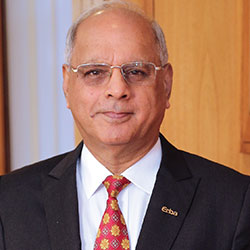 Suresh Vazirani
Suresh Vazirani
Founder Chairman,
Transasia Erba Group International of Companies
The Prime Minister recently launched the Pradhan Mantri Atmanirbhar Swasth Bharat Yojana (PMASBY), worth ₹64,180 crore, to strengthen the health care infrastructure across the country. It is one of the largest pan-India schemes for strengthening and development of primary, secondary, and tertiary healthcare infrastructure across the country. It will also help strengthen the existing national institutions, create new institutions, and detect and cure new diseases. In addition, it also includes the establishment of 17,000 rural and 11,000 urban health and wellness centers.
All of us believe it is time to strengthen the medical infrastructure at the ground level. At the moment, the diagnostic industry is one of the fastest growing industries in the country and is expected to grow at a CAGR of 20% over the next five years. A shift in mind set towards disease awareness and early detection is creating opportunities for innovation to meet the high demands.
Further, the pandemic has highlighted the critical role of diagnostics in disease prevention. Access to diagnostics will deepen beyond the tier I and II cities. Without adequate diagnostic tests, it would have been impossible to control the spread of COVID-19.
2022 will see an increasing number of labs being equipped to do more in less time. The focus will be on digitization and lab automation to create an ecosystem where patient data can transit seamlessly between pathologists and specialists.
The industry looks forward to crucial government support that is needed to help this industry grow for the Atma Nirbhar Bharat. The government also needs to follow the WHO recommendation for making essential diagnostics available free of cost to everyone in the country.
While technology is expected to continue to make in-roads, I reiterate that affordability and accessibility of healthcare need to take centre-stage. I am hoping that a major focus in the Union Budget 2022 will be given to the diagnostic industry, as it is the starting point to building a Healthy and Happy India. As per WHO, over 70% of treatment decisions depend on diagnostic tests.
While Make in India continues to remain the central focus for the government, as an Indian manufacturer, we wish there would have been some more efforts on encouraging Make in India and reducing the dependency on imports. Make in India is the only way to make healthcare more affordable in India. However, at present there is very little incentive for a medical devices company to change from importing and begin Make in India.
As an industry body member, I expect the following from the Union Budget 2022, to encourage Make in India:
Why India should support development of Diagnostic industry?: As the COVID pandemic has shown, diagnostic tests are absolutely essential for preventing spread of every disease. We all know that not only prevention is better than cure but prevention costs just 2% of what it costs to cure. Hence it is essential that a developing country like India should spend more money on prevention of disease than on curing it.
High import dependency: Presently, India has a high medical device import dependency of 86% as per Pharma Bureau and NITI Aayog report. Hence it is absolutely essential for India to ensure faster Make in India initiatives and achieve at least 50% local production.
High GST of 18% on diagnostic equipment: It is unbelievable that the Government is charging the same high GST rate of 18% even on essential diagnostic equipment as it does on non-essential and luxury products. We have been demanding reduction in the GST rate on medical supplies, diagnostic equipment, and devices from the current 18 percent to 5 percent. This would help in making affordable healthcare a reality.
Reality is that introduction of GST has worked against Make in India. The implementation of GST has led to imported devices being cheaper by 11%. In addition, there being no import duty on blood analyzers, makes it difficult for the Indian manufacturers to compete with the cheaper imports. The interests of the domestic manufacturers need to be protected through a revision in the GST regime so that not everyone gets the benefit of input credit.
Providing free healthcare to every citizen of India is the Government’s constitutional responsibility. It needs to focus on reducing the medical expenditure burden on general public, which currently bears almost 70 percent of all medical expenditure. While the government has exempted the healthcare services from GST, the taxation on the medical supplies and devices, ultimately is a hindrance in bringing down the cost of treatment. The common man can get some relief from this burden by a reduction in the GST rate on medical supplies, diagnostic equipment and devices. The GST rate, which currently stands at 18 percent, should be no more than 5 percent.
Inverted import duty structure: Even now, the import duty on several raw materials is higher than that on finished products. In fact, India’s import duty is the lowest among BRIC countries, at zero to 7.5 percent – making it cheaper to import devices rather than encouraging home grown, cutting edge technology Indian devices. This should be raised to 15-20 per cent, as a lower import duty dissuades manufacturers from producing them in India. To reduce the dependency on imports, we expected the Government to provide reasonable tariff protection for enabling Make in India.
Production-Linked Incentive (PLI) Scheme: At present the PLI rate for diagnostic products is just 3-5%. For Make in India to succeed this rate needs to be increased to at least 15%. This will make Indian manufacturers globally competitive, attract investment in the areas of core competency and cutting-edge technology; ensure efficiencies; create economies of scale; enhance exports.
R&D: Today medical technology is developing very fast. To keep up with the changing technology, Indian manufacturers need to build R&D infrastructure which needs huge amount of investment in R&D. To
encourage R&D in India, we expect the Government to provide 200% weighted tax deduction on expenditure made on R&D of medical devices.
Encouraging exports: Introduction of export incentives would lead to further encouraging this growth engine for the economy and help India become a global leader in medical devices.
The above changes can fulfill the Government’s commitment to an affordable healthcare system for all.
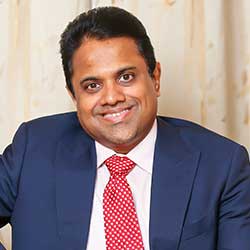
Dr. GSK Velu
Chairman & Managing Director,
Trivitron Healthcare & Neuberg Diagnostics
Government of India initiatives for healthcare ecosystem
-
Due to the Covid-19 pandemic, the state of healthcare in India has once again come under the spotlight. The industry as well as the government have been proactive in not only mitigating the crisis, but at the same time, taking initiatives to build a robust healthcare system across the country. Government of India has shown support for the industry by making and implementing new-age policies while at the same time, making an extra effort to save the country from the pandemic.
-
Due to the new-age policies by Government, the healthcare industry has grown to be one of the most essential industries in the country. In 2022, the market is estimated to have tripled to Rs. 8.6 trillion (US$ 133.44 billion). The industry is expanding rapidly as a result of improved coverage, services, and increased spending by both public and private entities.
-
Government’s recent initiatives for the healthcare industry has clearly proven the importance that the industry deserves. A number of policies and packages were created, including production-linked programme for APIs/KSMs and medical devices, robust plan for pharmaceuticals as well as advancement of Bulk Drug Parks and Medical Device Parks. These launches were in line with the ‘Atma Nirbhar Bharat’ which attracted domestic and foreign investors to participate in this industry.
-
The government of India also allocated funds to promote the existing ‘National Health Mission’ which is aimed at developing primary, secondary and tertiary healthcare system in the country. Apart from this, another path breaking initiative by the government which will mostly boost the domestic healthcare industry is the credit incentive program worth Rs. 50,000 Crore (US$ 6.8 billion). Under this program, companies can leverage the fund to expand hospital capacity or medical supplies. The program emphasizes on strengthening healthcare infrastructure specifically in the rural areas during COVID-19 crisis. It is also one of the safest credit program since the guarantor in this case is the government itself.
-
By undertaking deep structural and sustained reforms to strengthen the sector, the government has not left any stone unturned when it comes to fighting this outbreak. Covid-19 prevented people from physically accessing hospitals, and the situation was even worse in far reaching regions of the country. In such a scenario, the Health Ministry came up with “eSanjeevni Telemedicine Service” which was developed with the aim of providing medical consultations from the safety of the home. So far, the service has successfully executed more than 12 million tele-consultations.
-
One of the best efforts by the government has been the development and implementation of the CoWIN platform. In a country of ~140 crore citizens, simply having enough stock of vaccines is not the only important thing. Its timely distribution, and access have high importance. The platform has been successful in smooth delivery and inoculation of vaccine. Quite recently, India had administered 150 crore doses in total, all thanks to the efficient CoWIN platform. This success was acknowledged by several countries across the globe and many have also shown keen interest in developing a similar platform for themselves.
Pre budget expectation 2022-23
-
Tax break for 10 years for setting up facilities in upcoming economic zones, MedTech Parks & MedTech Manufacturing facilities, similar to the tax break given for Pharma – API facilities at Baddi, Himachal Pradesh.
-
Increase in customs duty for finished medical equipment / devices. Reduction in Customs duty for components and SKD imports to promote manufacturing in India.
-
Government grants to support R&D and Manufacturing Facility setup for important medical equipment like IVD instruments, Cath Lab, CT Scanners, MRI scanners, Ultrasound, Patient Monitor, Ventilators etc.
-
Tax breaks and incentives for private healthcare infrastructure creation in Tier 3 & 4 towns. This will enable the healthcare reach to the deepest level in the country.
-
Increase in Income Tax Exemption limits for Medical Insurance. In view of the Covid pandemic, the Insurance companies have increased the premium and in view of the above the Insurance premium Tax Exemption Limits have to be appropriately increased for all classes.
-
1 to 2% GST for health services to avail GST input credits by health services industry. GST has to be reduced significantly across all products and services, to spur consumer spending. Healthcare services have to be brought under GST regime with 1% levy so that they are able to avail the input credit available, which go as waste now , resulting in higher cost of services. If this is done, the overall cost of Healthcare services will actually come down benefitting larger section of the people.
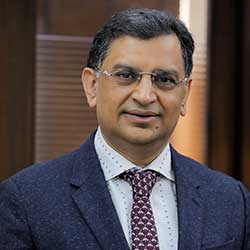
Himanshu Baid
Chairman, NMTF, CII,
Managing Director, Poly Medicure Ltd.
Over the last few years, healthcare sector has received adequate attention in the Union Budgets. This year also, we anticipate that the Government will introduce measures to improve the quality of healthcare and make it more affordable.The major expectation is for increased allocation of budget to the healthcare sector. Healthcare expenditure and investment should be increased to 2.5% from current spending of 1.25% of GDP.
More focused efforts are required to ensure India’s transition from an importer to an exporter in Medical Devices Sector. The Govt. should consider increasing export incentives under RoDTEP to 2% from the existing 0.5%, to encourage exports from India and also help companies to become more competitive in global markets.
Govt. should allow extra depreciation of 15% on Capex investments above Rs 25 crores PA for next 3 years for existing companies to push new investments. This will not only reduce the tax burden for existing companies but also spur demand of capital goods. Currently only new companies are entitled for reduced tax rate of 15%.
To boost R & D in Medical Technology sector, Govt. should restore 200% weighted tax deduction against R & D expenses since it is critical for new technology development and innovation.
Medical Devices and Equipment sector has 3 slab rates of GST – 5% , 12% and 18%. This should be harmonized to a uniform rate of 12%.
Product / Category specific Industrial Zones/ Parks with common infrastructure can give impetus to medical device manufacturing.
Although current attention is on Covid-19 pandemic, it is equally important to increase the proportion of expenditure on preventive healthcare and wellness. This will help ease the burden on existing healthcare infrastructure of non-communicable and lifestyle diseases.
There is a severe shortage of skilled manpower in the country. Extra funds must be allocated for skilling & up-skilling of clinicians, nurses, paramedical staff and other care providers. There is a need to set up new Medical Colleges & Nursing Schools, and incentivize them.
Hope healthcare finds its due for the deserved growth, in the upcoming budget.

Jatin Mahajan
Managing Director, J Mitra & Co,
Joint Coordinator, IVD (AiMeD)
The healthcare industry in general and the medical devices / diagnostics industry in particular, has been at the forefront of the fight against the corona pandemic. As the absolute frontline workers in the fight to control the pandemic, the industry has played a stellar role. The pandemic has brought this hitherto backend segment right into the forefront. Diagnostics drive around 70% of all therapeutic decisions. Yet, domestic production accounts for only 20 % and there is 80 % dependency on imports.
The Indian MedTech and diagnostics industry has been driving the government’s initiatives like Aatmanirbhar Bharat and Ayushman Bharat. Keeping in mind the significance of the medical devices / diagnostics industry, we have continued to liaise with the government / policy drivers to create the most potent and effective impact for the industry and the people we serve.
To boost the MedTech and diagnostics sector in the country, we have the following recommendations for the Government of India for the forthcoming Budget 2022.
-
Inverted duty structure & custom duty– this anomaly needs to be addressed. Zero custom duty on imported products have led to uncontrolled dumping of non-standardised Chinese products in the Indian market. This is negatively impacting Indian manufacturers who meet all quality standards and duty structures imposed by the government. Also the duty on finished imported products is lower as compared to the import of raw material. This does not favour domestic production, and is irrationally skewed in favour of importers. It is exactly this reason which has made us dependent on imports and not self-reliant through domestic manufacturing.
-
Rationalisation of Trade Margins – Importers sell their products at 10x – 20x of the landing price in India. This massive profiteering (especially at the cost of custom duty) must be curbed. MRP for all such imported products must be capped at 4x of the landing price.
-
ICMED as the Umbrella Certification – There should be a robust strategy for establishing ICMED as a robust Indian certification mark equivalent to the likes of CE and FDA. This should be implemented for all domestic and imported devices. This will bring about standardisation and raise the quality of the medical devices available in the Indian market. This will also curb the proliferation of inferior and low-quality Chinese products that are rampantly being dumped in the Indian market.
-
Infrastructure for Manufacturing – Development of Medical Devices manufacturing hubs and special economic zones catering to the segment need to be accelerated. They will provide the right mix of common infrastructure, facilities, and subsidies for technological upgradation. This will increase sustainability and economies of scale, and boost the growth of the segment.
-
Other aspects critical for winning the Make-in-India race – Ensuring cost advantage over China; faster government permissions and single-window clearances; ease of doing business; adequate financing; competent infrastructure; soft loans with longer repayments; should be key focus areas in the coming budget.
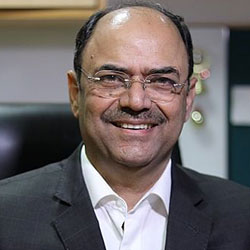
Sunil Khurana
CEO & MD,
BPL Medical Technologies
-
PLI scheme, which is a big driver to produce products locally, revenue growth assumptions must be more realistic where MSME and Medium Industry can also qualify.
-
A more participative approach by the GOI to incentivise R&D for the medical devices sector will promote more and quicker launches of own designed products locally.
-
Similarly, GOI must consider the intangible expense of transfer buy out from overseas as the R&D category and a 50% subsidy on this will help speed quick localization of medical devices by reducing R&D time
-
Public Procurement Order (PPO) to go across as GOI drives to all the states and not just selectively in a few states. This will also help drive the “Make in India” initiative.
-
Raising the bar of import by further increasing import cell (minimum raise by 10%) on medical devices already are being manufactured in India. Only products not currently getting manufactured in India could stay at the same rate. Entry barriers must be raised to push more to grow the pie of locally produced products.
-
Government must increase the expenditure on healthcare as a percentage of GDP on a YOY basis with the aim to reach a 5% level in the next 5 years and stay at the same level.
-
Reduction of GST level on medical devices to the lowest slab of 5% will help grow this segment. Accordingly, correction in inverted tax structure must be done on imported devices.
-
When locally made products are export in overseas, the GOI must launch a 10% direct incentive on export revenue. This will encourage Indian companies to be competitive to win more against low-cost country products and bring in precious foreign currency.
-
Home care treatment must be included in insurance coverage, this will reduce the load on hospitals and release beds for more critical patients.

Chander Shekhar Sibal
Senior Vice President, Medical Division,
Fujifilm India
“We’re looking forward to building and balancing the country’s healthcare infrastructure with government’s support as we enter the third year of the pandemic. We hope that the budget delivers a special focus on healthcare to mitigate the devastation from the coronavirus. For this, it will be pertinent to have concrete policies that ensure accessible and affordable healthcare. It would be great to see the allocation of funds within the states as per policy. The timeline of fund clearance should be reduced to clear roadblocks due to lack of funds. Once these are in place, we can expect better outcomes out of public-private partnerships in the space and make payment processing easier and quicker. Since healthcare has made significant advances in the light of COVID-19, this year, we would like to bring out a focus on preventive healthcare to fortify the health of the people. With a large population and a diverse requirement for healthcare across situations, we at Fujifilm are gearing up to support India’s healthcare/medical needs.”

Rajiv Nath
Forum Coordinator,
Association of Indian Medical Device Industry (AiMeD)
Imports from China of price sensitive Medical Devices went up steeply by 75% from Rs.5208 Cr in 2019-20 to Rs. 9112 Cr in 2020-21. This is a lost opportunity for Indian Manufacturers to grow & compete globally but saw with dismay dumping of Chinese import when duties were slashed to zero % at behest of Importer dominant lobbies for Covid critical items.
Sadly these are the same Indian Manufacturers/ Entrepreneurs, when imports got disrupted during COVID-19 crisis, the Govt. relied heavily on them to meet the rising demand of essential Covid items for the country pushing the Indian medical devices sector to become self-reliant.
AiMeD has the following Budget recommendations to end the 80-85% import dependence forced upon India and an ever increasing import bill of Rs.46000 Crore:
-
As done for Mobile Phones, Government should protect the manufacturing base in India by increasing Basic Custom Duty on import of Medical Devices to at least 15% from current 0-7.5% duty though WTO Bound rate is mostly 40%. Due to such low custom duty India is importing Rs. 46,000 Cr of Medical Devices and is over 80% Import Dependent. This 80% can be reduced to below 30% with correct policies as done for mobile phones and consumer electronics. The importers lobby’s excuse against increasing custom duty that impacts patients is misplaced – consumers buy devices on MRP, in past when duties were reduced were the MRP reduced and benefits passed on to the consumers? MRPs are usually not changed with change in custom duty historically and there is scope to reduce these.
-
Alternatively, the Govt needs to put an additional 2% Infrastructural Development Cess on imports that could be used to provide budgetary support to Dept of Pharma that has the mandate to promote manufacturing of medical Devices; build infrastructure of existing clusters and NIPERs; help to make Medical Devices parks and finance further PLI schemes.
The Health Cess applied on some HS codes of Medical Devices need to be extended to other Devices that are part of the 150 HS codes that govern medical Devices and that were not covered in earlier notification.
-
Instead of 18% GST applicable on some Medical Devices that are not luxury goods, the GST needs to be a flat 12% for all Medical Devices. Also reducing GST to 5% is making Indian products non-competitive to imports as then manufacturers are unable to keep reduced Ex-Factory prices based on lower input costs net of GST.
-
Trade Margin: The purpose of low Duty was to help consumers get affordable access to Devices. This objective is not realized if consumer will be charged a high MRP of 10 to 20 times import landed price. Customs recording of MRP on Bill of Entry will assist to bring in data generation for Policy Making by evidence of a Trade Margin Rationalization policy for the Manufacturer / Importer so that there is a capping of maximum 4 times on the Ex-factory price on import landed price (at first point of sale viz. when GST/ Import Duty is 1st levied on entering into the market).
We request kind consideration of Govt. of India for encouraging domestic manufacturing to be sustainable in long term for becoming AtmaNirbhar and to address National Healthcare Security needs as defined in National Health Policy 2017 and for Ease of Doing Business.
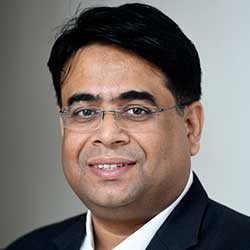
Raktim Chattopadhyay
Founder & CEO,
Esperer Nutrition
“On the eve of the budget of such a large democratic country, there is no point to debate priorities. It’s imperative we want Govt to emphasize social safety. The latest Covid surge appears to be the biggest risk factor for the economy at the moment. We are coming out of a very high fiscal deficit. Common people of the nation expect deduction on medical expenses, tax exemption on annuity income, and a hike in basic exemption cap. So I feel, to achieve the same we must stand strong with Govt and encourage to not compromise on capital expenditure. Because the fear remains, when the emphasis is on controlling the fiscal deficit, the axe always falls on capital expenditure. We must balance our aspirations and reality when looking at the budget critically.”
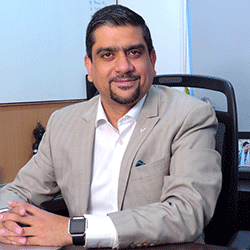 Vikram Thaploo
Vikram Thaploo
CEO,
Apollo Telehealth
“India is combating a massive global pandemic with its resources available in the health sector. The health sector is expecting more specific allotments in this year’s budget to mitigate COVID-19 and help in the growth of the telemedicine sector. The telemedicine segment is growing at a rapid pace and in the future, we are expecting more technological innovations to take place in the industry therefore, the budget should be well allocated to the healthcare sector to initiate new innovations to be prepared for the fight with pandemics like covid-19 in the future. It is important especially in a country like India where digital health can truly provide care to areas with short supply of doctors. Increased allocation of budget for promotion of telemedicine, home-based healthcare and national digital health mission implementation will help in building a strong healthcare ecosystem in the country. Telemedicine has potential to improve access to healthcare in remote and rural areas. Home-based healthcare will reduce burden on limited healthcare facilities. Digital Health along with various innovations should be encouraged for India’s future growth in population health. The government should also support private players and startups in this segment to increase the current coverage of the locations including tier-2 and tier-3 cities to provide the advanced healthcare facilities in these areas.”
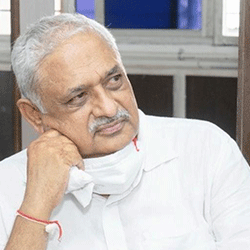 Ashok Patel
Ashok Patel
CEO and Founder,
Max Ventilator
“Apart from the need to raise the share of healthcare as a proportion of GDP to at least 2.5 percent in the upcoming budget, the government must also further build on its earlier policy incentives such as PLI schemes and dedicated medtech parks by increasing allocations. In fact, the government should ensure that the smaller medical device players also get included and can benefit from the special schemes and offers that it has extended with a view to catalyze domestic manufacturing and to achieve the larger goal of self-reliance. Given the repeated occurrences of infectious diseases of epidemic scale in recent years, the government should also invest sufficiently into genetic and genomic research, epidemiology and vaccine research besides increasing allocation for broader healthcare R&D. Of course, the diagnostics and preventive health device segment must be given as much policy and financial support as possible. Further, the budget could also incentivize the consumables as well as medical device accessory segments which hold huge promise for the domestic sector. At the same time, adequate allocation must be made for training of personnel required for the deployment and usage of critical care equipment such as ventilators and other similar lifesaving devices.”
 Nikkhil K Masurkar
Nikkhil K Masurkar
Executive Director,
Entod Pharmaceutical
“The pharmaceutical and medical devices industry has gained significant momentum owing to the government’s AatmaNirbhar Bharat initiative. The Union Budget 2022 is expected to build on the Production Linked Incentive (PLI) schemes and encourage continued investments in capacity expansion of sensitive APIs, drug intermediates, complex excipients, biopharmaceuticals and medical devices. While the draft R&D policy focuses on creating an ecosystem for research and innovation, certain tax incentives for the investment in ‘R&D focused funds’, set up for R&D based activities, could be introduced. India should participate in the innovation area at a global level. Along with a scheme similar to the PLI, the government needs to consider tax incentives to attract innovation. Interaction with industry and global players can help India’s pharmaceutical sector to move from a generic manufacturer to an innovator developer and manufacturer for the world. Apart from that, Technology/digital transformation is another key area of focus. In fact, it would be the building block for the much-expected universal healthcare in India. Presently, GST on drugs is taxed under four categories – nil, 5%, 12% and 18%. While a few life-saving drugs are taxed at nil rates, some are taxed at 5 per cent and the majority fall under the 12 per cent GST slab. Extensions of a tax deduction on product development and R&D are some of the other demands of the pharmaceutical sector. The industry also seeks a 150% deduction in tax on in-house R&D.”
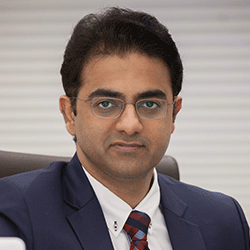 Dr Aashish Chaudhry
Dr Aashish Chaudhry
Managing Director,
Aakash Healthcare, Dwarka
“The sudden emergence of Covid-19 prompted the Indian government to nearly double its healthcare budget year over year. As a result, the most prominent area of focus in Budget 2022 is expected to be healthcare. We anticipate that the government of India will increase its healthcare spending in this budget. The last Budget announced a 137% increase in healthcare spending to address some of the gaps. Healthcare accounted for about 1.8 percent of GDP in 2021. We should aim to raise it to at least 2.5 percent of GDP this year. Despite the focus on the Covid-19 pandemic at the moment, it is critical to increase the proportion of spending on preventive healthcare and wellness. Ayushman Bharat is undeniably a positive step toward achieving the goal of universal healthcare; however, more funding is required to ensure its long-term success.”
 Sugandh Ahluwalia
Sugandh Ahluwalia
Chief of Strategy,
Indian Spinal Injuries Centre
“As we enter the third year of the pandemic, our expectations for Budget 2022 are for increased spending on healthcare. India’s total healthcare expenditure is significantly lower than that of other countries. The pandemic has highlighted the critical need for high-quality public hospitals. More public-private partnerships, as well as additional investments, are required to strengthen indigenous manufacturing of medical devices, personal protective equipment (PPE), and raw materials for drugs. Hence, the government must allocate more budget for the healthcare industry. Furthermore, higher tax breaks for the private sector to modernize medical facilities will go a long way toward ensuring better healthcare, more investments, and thus more jobs.”
 Dr. Gauri Agarwal
Dr. Gauri Agarwal
Founder & Director,
Genestrings Diagnostic and Seeds of Innocence
“During the pandemic, medical diagnostics emerged as the first line of disease containment and the most important public health measure. The World Health Organization’s T3: Test. Treat. Track. initiative to combat COVID-19 has brought diagnostics to the forefront, emphasizing the growing need for better testing capabilities and the importance of quality. People have begun to understand the importance and needs of molecular/genetic testing, and it has invariably resulted in increased investments by large private labs and establishment of more RT PCR labs across the country. In this sense, the government’s collaboration with the private sector, while refocusing on life science, healthcare, and diagnostics, will play a critical role in deciding the future of diagnostics in the country.
Public Private Partnership models as have been proposed earlier by National Health Authority, are promising initiatives of mutual efforts, whereby models for partnership with private diagnostic companies were proposed for bettering the infrastructure, services and quality of testing in Tier II and Tier III Indian Cities. We advocate the principle of introducing high end molecular/genetic testing at a micro level in Indian Cities for reducing the difficulties in accessing quality testing and for strengthening regional medical infrastructure at a micro level. We further are staunch believers of developing indigenous testing technologies, medical devices and related infrastructure to promote an environment of Research and Development in this field. Accordingly, with the help of the Government’s grants, we can collectively formulate and implement cheaper alternatives to expensive genetic testing.”
“The Assisted Reproductive Technology Bill, 2021 is a quantum leap by the Union Government to promote the Indian IVF industry. However, it is pertinent to focus that the nodal concern still remains to be the general people of the country and their struggles with access to Assisted Reproductive Technologies, popularly, IVF. The problem is complemented by a failure by leading insurance companies to cover infertility, which makes it highly difficult for general people to avail these services.
Assisted Reproductive Technologies (ART) is a dynamic approach to science of reproduction and is not only limited to conceiving, rather it also is engaged in spreading an overall awareness about the right contraceptive measures and appropriate sanitation procedures. Consequently, it is an essential discipline concerning the overall health and well-being of people.
Recent research in this field has constantly warned us about the expected increase in the infertility rates of the country. Hence, it becomes significant to undertake preventive measures against this. Accordingly, increasing accessibility to ARTs in rural areas and providing more incentives to people to avail these services will come as a boon to the Indian IVF industry which is expected to become a $12 Billion Global Market in the coming Financial Year.”
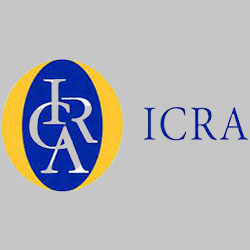 ICRA
ICRA
Healthcare:
“At ~Rs. 74,602 crore, the budgetary allocation for healthcare in FY2022 dropped by 9.8%, if compared to the Revised Estimates for FY2021. The funds earmaked for healthcare, as a percentage of GDP and beds per 10,000 population, continues to be lower for India against most developing nations. Given the ongoing pandemic, ICRA expects a sizeable increase in grants to the sector in the forthcoming budget. Higher allocation is also necessitated to enable the Government achieve its target spend of 2.5% of GDP on healthcare by 2025, from the current sub 1.5% levels.
With resurgence in Omicron cases, ICRA expects partial cost towards children’s vaccination and booster shots for the adult population to be a part of the upcoming budgetary allotment towards the sector.
To boost investments in the sector, tax incentives for private sector investments in modernising medical facilities and developing greenfield hospitals will be a welcome step. Further, considering the low doctors to people and nurses to people ratio (aggregate density of health workers is 23 per 10,000 population, which is significantly lower than that recommended by WHO), increased allocation towards training medical personnel, in addition to improving infrastructure in tier-2 and tier-3 cities, would be a favourable move.”
Pharma:
“More than 65% of the Active Pharmaceutical Ingredient (API)/ Key Starting Material (KSM) required by pharma companies are imported from China. Recent events, such as the Covid-19 pandemic leading to supply chain disruptions coupled with geo-political issues, have brought into focus the risk of such high import dependence. Last year, the GoI had announced a production-linked incentive (PLI) scheme of Rs. 150 billion for API manufacturers, covering around 53 APIs, which are critical in terms of import dependence on China. Similar incentives for other import dependent APIs will boost local manufacturing and reduce dependence on import.
Medicines are taxed under four categories—nl, 5%, 12% and 18%. Certain life-saving medicines are taxed at a nil rate, while the rest are taxed at 5.0%. Most medicines fall under the 12.0% GST slab. Last year, the GoI had reducted the GST rate on various Covid-19 treatment medicines and also brought down the GST rate for certain cancer treatment medicines and exempted certain other life-saving medicines. Similar incremental changes will increase affordability and higher consumption of such drugs leading to higher demand.
Being research-intensive, the pharma sector incurs significant amount on R&D. Providing fiscal (higher tax deductions) and non-fiscal incentives for R&D expenses will support higher investments in developing new drugs. Investments in novel and specialty drugs are subject to higher risk of failure leading to risk averseness. Higher tax incentives for R&D spends will incentivise Indian players to spend more, thereby providing impetus to newer research initiatives.”
Life Sciences & Health Care
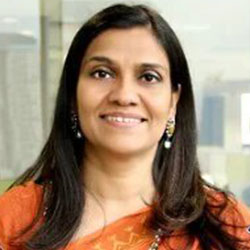 Charu Sehgal
Charu Sehgal
Head Strategy & Operations Consulting,
Deloitte India
Current Environment
A number of steps taken by the government in the recent past for the healthcare sector have clearly demonstrated the importance that the sector duly deserved. Various policies and packages such as production linked incentive scheme for APIs / KSMs and medical devices, recent scheme for pharmaceuticals, and Promotion of Bulk Drug Parks, were introduced.. The announcement of these schemes, in line with Atma Nirbhar Bharat, encouraged domestic and international players to invest in the sector.
Another welcome step taken by the Department of Pharmaceuticals (Government of India) was issuance of draft research and development policy that aims at creating an ecosystem for innovation by focussing on three areas – first, create a regulatory environment that facilitates innovation and research in product development; second, incentivise private and public investment in innovation through a mix of fiscal and non-fiscal measures, and third, to build an enabling ecosystem designed to support innovation and cross sectoral research as a strong institutional foundation for sustainable growth in the sector.
Besides above, the recent announcement of Ayushman Bharat Digital Mission (ABDM) is certainly a promising initiative in today’s digital age where the government plans to allot every citizen a health ID along with the platform to store the medical documents online. This coupled with growing telemedicine norm will surely help in making medical consulting available in remote areas.
Keeping in perspective the holistic approach of prevention, cure and well-being, the increased budgetary allocation during the Union Budget 2021 gave impetus to the sector. However, achieving affordable healthcare for all is the ask of current times.
Expectations Top three asks:
Expectation #1: Tax holidays and funding for hospitals and skill development:
Reintroducing tax holidays for rural hospitals with a flexibility to select beneficial years and viability gap funding by the government for setting up hospitals in Tier 1 and Tier 2 cities would make this area an attractive space for investment and strengthen country’s healthcare infrastructure.
A weighted deduction of expenses incurred on skill development in the healthcare sector would facilitate government to achieve its aims of WHO recommended doctor patient ratio of 1:1000 by 2024.
Expectation #2: GST Reforms
Bring more life-saving drugs at the lowest rate of GST and “zero-rating” of GST for health care services
Health care services are currently exempt from GST except few elements of the services, due to which the procurement taxes (whether for inputs, input services or capital goods) form a significant part of the operational costs. This will achieve the twin objectives of keeping the credit chain intact and will ensure that the tax is not loaded on to the cost of healthcare services. Refunds on this account will enable the service providers to pass on the benefit in terms of affordable health care services.
Increase in time period for closure of sale on approval (SOA) transactions from 6 months to 24 months
Medical device suppliers supply various lifesaving goods such as implants and stents, etc., to hospitals on SOA basis. As these goods come in various sizes/ types and are expensive, the hospitals do not upfront buy the same and get the goods on SOA basis. The invoice is issued by supplier only once the goods are consumed by hospitals. At times, this period may extend upto a couple of years. In view of this, it is recommended that prescribed period of 6 months for closure of SOA transactions be increased to 24 months, especially for implants, stents and other similar goods.
Provide certain relaxations under GST law for expired medicines
Relaxing the time limit under GST law to adjust the tax liability of credit notes, in case of expired medicines, which is currently until September of the next financial year in which the supply was made. Alternatively, it may be clarified that the relevant rule will not require reversal of input tax credit for products consumed by healthcare industry.
Expectation #3: Creating the ecosystem for innovation and research
While the draft R&D policy focusses on creating an ecosystem for innovation and research, certain tax incentives for the investment in ‘R&D focused funds’, set up for R&D based activities, could be introduced.
Research-linked incentives can provide the impetus to industry for increasing investment in R&D investment and build the much-needed linkages with academia to co-innovate. A research-linked incentive scheme could be introduced where the applicants are incentivised basis the R&D spend, employment, and added incentives based on outcome.
An old ask pending to be addressed is in relation to current patent box regime. The same needs improvement in terms of expanding its coverage to assignees / transferees of the patent instead of restricting it to only the true and first inventor of the invention. Introducing a reduced tax regime on commercialisation of the patents anywhere across the globe will make it implementable.
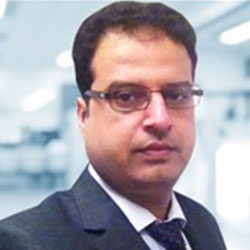
Dr. Alok Khullar
CEO,
Gleneagles Global Health City, Chennai
The outbreak of Covid-19 has taught the healthcare sector some important lessons. The healthcare sector has and will continue to play a crucial role in saving lives, treating other ailments while tackling the pandemic. With the disruption caused to the healthcare sector during this period, we urge the government to give adequate importance to the healthcare sector in the upcoming Union Budget 2022 by considering –
-
Special schemes that should be provided for formal training of doctors and nurses to enhance skills and bandwidth to offer care to a larger population which will help strengthen the quality of healthcare resources in the longer run
-
Building capacity for Intensive Care by enhancing skills of nurses and by providing better equipment and infrastructure
-
Significance to be given to Appropriate Screening for Non-Communicable Diseases to ensure timely diagnosis and treatment which will help in reduction of hospitalisation in the last minute
-
Upgrading infrastructure at Primary Health Care level for early Outpatient treatment thus reducing Hospitalization time and cost
-
Benefits to be given to manufacturers of Healthcare equipment & consumables under the ‘Make in India’ campaign for high quality products and healthcare equipment to be manufactured at reasonable costs
-
Healthcare organisations must be given access to working capital and preferential funding to ensure that the overall cost of operations is reduced
Healthcare sector needs to be considered as a priority and an essential service. Various subsidies and benefits should be given on land rates and other necessities such as electricity, as it will pave for accessible and affordable healthcare with better infrastructure and high quality treatment improving access to care and better patient outcomes.”
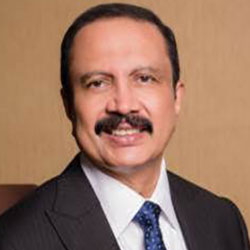
Azad Moopen
Founder Chairman and Managing Director,
Aster DM Healthcare
The budget should incentivise the private sector to improve medical facilities in Tier 2 & 3 cities and rural areas to bridge the healthcare urban-rural divide.While the last Union Budget saw 137% increase in healthcare spending which accounted for 1.8% of the GDP spends, it would help to increase the allocation to least 3% to ensure many of the initiatives. Technological innovations and government initiatives are transforming the healthcare industry in India.Government should roll out programs to train new and up-skill the existing manpower to address the shortage of skilled manpower in the healthcare sector.The Government should also consider “zero-rating” of GST on healthcare services and the lowest rate of GST on drugs, medical devices, and health insurance premiums to improve affordability. Rationalizing the import duty on healthcare equipment is also required.The government should provide tax incentives for investment in research & development for genetic research and genome mapping which can go a long way in supporting the National Digital Health Mission in early identification of genetic traits and intervention in the prevention of major NCDs.
Last but not the least, the government should increase budgetary allocation for the promotion of digital healthcare to improve access in rural and remote areas. This will not only reduce the burden on our limited healthcare facilities, but also the cost burden on the patients.
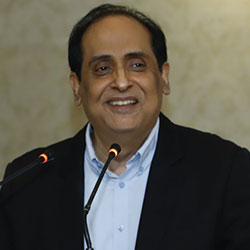
RN Mohanty
CEO,
Sightsavers India
“India has the largest population of blind and visually impaired people. Most of them live in the rural parts of the country. When we hit the worst phase of the Covid-19 pandemic in 2021, Sightsavers’ eye care partner hospitals around different states provided their beds to Covid-19 patients. In the last budget, the major focus was on the Health Sector and although efforts were made to reduce the prevalence of blindness and we have been very successful in improving cataract surgery rates (CSR) however, the biggest drawbacks to reducing the prevalence of blindness are still increasing. This year, we are expecting that the government allocates a suitable budget for the healthcare sector where we can build a system where eye health services are accessible for everyone despite the pandemic situation in the future.”

G. Srinivasan
CEO,
Athulya
“The changing dynamics of the healthcare industry post the outbreak of Covid-19 has elucidated the need for enhancing the skills of existing healthcare workers to facilitate better service.
Hence, initiatives to motivate youngsters to take up a career in the healthcare industry and to include continuous development programs in their curriculum to enhance their skills will address the current demand for healthcare professionals.
To help our senior citizens meet the rising cost of medical treatments we would request to increase the health insurance age limit for senior citizens and to include provisions to increase the coverage, irrespective of existing medical illnesses.
To increase the support and guidance given to start-ups, in the form of incentives towards building and developing healthcare technologies that would aid in early detection, monitoring, screening and diagnosis of health ailments. This will reduce our dependence on international companies for the same.
We would also expect the government to considerately reduce the taxes imposed on medical equipment that are very essential, which will result in bringing down the overall medical expenses for an individual with ailments and comorbidities. Eventually, helping our senior citizen community to fight the potential escalations in their medical bills.
And finally, to increase the tax benefits against their medical expenses and to revise the existing deduction for senior citizens as the cost of living has increased.”

Mayank Banerjee
Co-founder and CEO,
Even Healthcare
“India’s public expenditure on fortifying healthcare has been low but it is picking up in the light of the recent crisis. We expect and hope the government to dedicate a chunk of its budget to improve healthcare not just by allocating more financial resources directly to hospitals and facilities, but also appending medical data that is extremely fragmented compared to developed countries. We have high hopes from the National Digital Health Mission and how it would improve clinical outcomes when a patient’s entire history is accessible digitally without relying on the patient’s own paperwork and memory.
The second fight to fight would be to ensure everyone has adequate health coverage as we’re still among the highest out of pocket payers in healthcare and this financial burden pushes millions into poverty each year. Around 58.7% of healthcare services are still paid out of pocket in India. In that regard, it would be interesting to see how the government brings unique healthcare financing models to cover more people than before.”

Gandharv Roy
COO,
Medica Superspecialty Hospital
A nation needs a healthy population to prosper. The obliteration of nearly 5 lakhs in less than two years owing to pandemic has brought the healthcare sector to the forefront in terms of making healthcare for all.
The last two years have surely been an eyeopener for healthcare professionals globally, with respect to the overnight revamping of the existing healthcare system. Budget 2022-23 is expected to address to the ground realties of the healthcare and the key components that we are looking forward to such addressal are: research & innovation, digitization, public – private partnerships, tax reforms and research.
Budget 2022-23 needs to address the low per capita spend ($3) on indigenous medical devices since there is a significant dearth in indigenous manufacturing, and imports constitute over a significant percentage of the high-end medical device market. India is a fertile ground for MedTech innovation, and the industry yearns for single window clearances for startups to thrive in the ecosystem. If the government could set up a system to facilitate early validation of MedTech devices and services, it could exponentially accelerate the development and deployment of various technologies in healthcare. Tax break for 10 years for setting up facilities in upcoming economic zones, MedTech Parks & MedTech Manufacturing facilities is one of the primary needs.
Government should also look at increase in customs duty of finished medical equipment / devices and subsequent reduction in customs duty for components and SKD imports to promote ‘Make in India’. Reintroducing tax holidays for rural hospitals with a flexibility to select beneficial years and viability gap funding by the government will incentivize private healthcare infrastructure creation in Tier 3 & 4 towns. GST must be reduced significantly across all products and services, to spur consumer spending.
We expect the government to look at increasing the healthcare expenditure above 2.5 per cent of the GDP. We are expecting an announcement of 10-12 % rise in healthcare expenditure which will enable the much-needed attention that healthcare requires now.
Healthcare services must be brought under GST regime with 1% levy so that they are able to avail the input credit available. If this is done, the overall cost of healthcare services will come down benefitting a larger section of the people. Government needs to bring more life-saving drugs at the lowest rate of GST, “zero-rating” of GST for health care services, this will help achieve the twin objectives of keeping the credit chain intact and will ensure that the tax is not loaded on to the cost of healthcare services making way for more affordable healthcare.
The ongoing pandemic has necessitated immediate need for integration of technology into the healthcare sector. Merging existing technologies and systems and evolving them to match future exigencies is the need of the hour. The focus on innovation and cutting-edge digital health innovations is of supreme importance like never before. Such synergies shall build up faster service delivery, rapid scalability of diagnostics, tele consultations and telemedicine for all.
Intellectual capital must be retained & sustained. Considering the shortage of medical manpower in the country emphasis must be towards skill development to achieve the aim of WHO recommended doctor patient ratio of 1:1000 by 2024. And should that not be possible, it is vital that the country build a solid line of paramedics who can deliver the care most required, on the ground, at the right time.
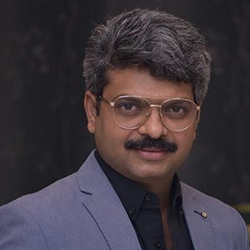
Kamal Narayan Omer
Founder & CEO,
IHW Council
“Amid the Omicron variant that has ushered in a new and disorienting phase of the COVID-19 pandemic, the countdown for the Union Budget 2022 has begun. Last year, the Government of India rolled out a slew of people-friendly packages at the height of this pandemic which boosted the economy in an unprecedented manner. This year, too, we all look forward to a budget that will ensure social health protection to the needy and disadvantaged.”
“First and foremost, there should be a tax reduction on any form of treatment related to the Coronavirus. Ever since the pandemic struck us, both the Government of India and state governments have provided financial assistance to the infected people and their families. However, it has been seen that many people have been deprived of it. So, providing tax relief for such financial expenses will help all and sundry, especially to the poor citizens. A complete tax relief and an extension of it will also immensely benefit two groups of people. One, the middle-class taxpayers. Two, people who still don’t have medical insurance. While the Section 80D currently allows a deduction of medical expenditure only for senior citizens, the same should be provided to people irrespective of age.”
“Secondly, including all life-saving drugs in the generic category is a must. For instance, every year millions of Indians are diagnosed with different types of cancer. Given the high cost of the life-saving cancer drugs, many patients are financially stretched to the limit while paying out of their own pockets. Therefore, reduction of GST on these drugs are essential.”
“Thirdly, and most importantly, the COVID-19 pandemic has reinstated the importance of having basic healthcare across the country, especially in the rural set-ups. In India, over 75% of the healthcare infrastructure is concentrated in urban areas and there is a serious degradation in the quality or infrastructure in the rural areas. In fact, tens of thousands of patients in the rural areas are still in the hands of quacks and unscientific medical practices. The villagers travel a long distance to the nearest hospital in case of emergencies and the only viable transportation is private transport which many cannot afford because of their financial condition. Therefore, there is a growing need to create and deploy innovative technologies to ensure last-mile delivery of basic healthcare services, even in the hinterlands.”
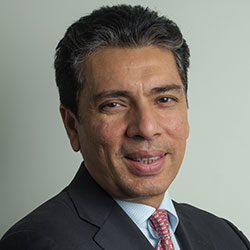
Vishal Bali
Executive Chairperson,
Asia Healthcare Holdings
“ The multiple waves of the pandemic are exposing India’s demand – supply gap in healthcare across infrastructure, people, technology. Budget 2022 must remain focused on increased allocation to the healthcare sector and fast track the bridging of the gap. Public healthcare spending on healthcare needs needs urgent reform and a clear allocation of 2.5% of GDP in real terms and not under a consolidation of allocations to various schemes and depts related to health and sanitation. Strengthing Primary Healthcare both at urban and rural level with allocation and execution should be a key priority to develop the tiered healthcare system of the country. The Govt’s push for financing healthcare infrastructure development can also be aided through the issuance of GOI backed healthcare bonds. Indigenisation of medical technology needs more steps under the Make in India program both for local and international players to make India a manufacturing hub for medical technologies. In addition to this, reinstatement of the weighted deduction for R&D expenditure to encourage innovation of new products and technologies, particularly in the pharmaceutical and healthcare industry should become the need of the hour for the country. Technology enablement has the power to redefine healthcare access in India, last mile connectivity acceleration can create a new power of disease surveillance, population healthcare data management and enablement of healthcare services and products. The Government should also look at accelerating rural internet connectivity to support education and healthcare services. The pandemic has shown that the need for health insurance for the citizens is imperative, to accelerate the penetration of health insurance further the Union Budget 2022 should also introduce a higher provision for tax deduction under section 80D. Budget 2022 should continue the path of transformation of healthcare for India and ensure that it continues to be a national priority “
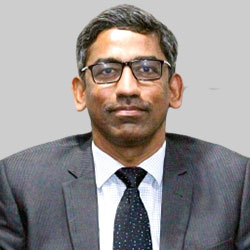
Dr. C. J. Vetrievel
Founder Chairman & Managing Director,
Be Well Hospital, Chennai
The excellent leadership and dedication shown by the Central Government while handling the pandemic is commendable and must take inspiration from the same. With the country battling the third wave of Covid-19, there is a huge gap in the healthcare system that needs to be addressed by various healthcare service providers to form a network. An effective public-private partnership (PPP) model should be proposed to ensure cost efficient operations are conducted. Additionally, the capital expenditure incurred on eligible healthcare projects in semi-urban and rural areas should be reduced for ventures with minimum 50 beds. This will help in reaching rural, semi-urban, peri-urban and suburban regions of the state by having a distributed healthcare delivery model rather than crowding in cities whilst providing quality healthcare services in the above said regions. Considering the shortage of medical manpower in the country, a weighted deduction of expenses incurred on skill development in the healthcare sector must be offered.
Input credit on various services availed is currently very high resulting in high cost of treatment which is borne by the patient. GST on rental property is not eligible for input credit making it a cost for the hospital. Alternatively, hospitals should also be given the ability to claim the refund of input credits, similar to the benefits availed by Export Oriented Units and Special Economic Zones. This will help in reducing the cost of rendering services to patients.
Healthcare sector needs to be considered as a priority and an essential service. Loans for working capital should also be provided to new borrowers under the Emergency Credit Line Guarantee Scheme (ECLGS). These are some considerations that we are requesting from the Government in the upcoming Union Budget 2022.
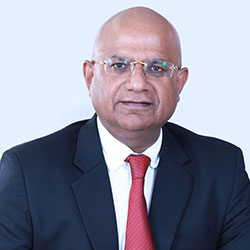
Dr Alok Roy
Chair, FICCI Health Services Committee and Chairman,
Medica Group of Hospitals
COVID 19 has highlighted the significance of a robust healthcare system in the country and proved that you are only as strong as your healthcare systems. The healthcare sector, ravaged by an ongoing pandemic, demands increased outlays in healthcare expenditure, investment in research & innovation, and funds for the development of suitable resources to strengthen the monitoring system of the public health system as a whole.
Union Budget 2022-23 has to be a forward looking budget as we are battling with a two year old plus pandemic affecting lives and livelihoods. This year’s Budget shall redefine India as it makes steps to emerge out from the crisis towards a path of sustainable growth.
The Centre’s Budgetary allocation to the healthcare sector should be increased to at least 2.5 per cent of the GDP to bridge several gaps that currently exist in the system. Further, tech driven-innovative healthcare solutions have played a pivotal role in fighting mankind’s biggest health crisis and healthcare providers have embraced these solutions to solve for accessibility. This year’s budget should focus on encouraging these solutions by way of tax benefits/ tax holidays and even establishing a healthcare innovation fund.
Though all our focus is on the COVID-19 pandemic at the moment, it is critical to increase spending on preventive healthcare and wellness. Ayushman Bharat is undeniably a positive step toward achieving the goal of universal healthcare; however, more funding is required to ensure its long-term success.
Healthcare funding through subsidized loans specially in Tier II & III cities need to be provided for as this shall help to reactivate the healthcare infrastructure sector which will further boost other supporting industries.
Identifying areas of for PPP models and a robust framework for PPP could help boost private sector investment, augment public capacity while improving efficiency. Government must accord due importance to operational viability gap funding, over &b above the capital VGF. This aspect is missing and that’s why most of the hospitals are unable to utilise the capital funding options provided by the banks.
This pandemic has also necessitated for a more self-reliant India, —Atmanirbhar Bharat’. For Indian MedTech sector to be viable & sustaining, there has to be a waiver off the duty and CESS, releasing sectoral payment dues, to free up the working capital for investments in critical spare and lifesaving equipment. There is a huge scope for the medical device industry to flourish. Currently, India is among top 20 markets for medical devices globally. The market is expected to reach $50 billion in 2025. However, India currently imports 80 per cent of medical devices requirements. More emphasis should be placed in creating a commensurate ecosystem which will drive manufacturing within the country. More medical device parks like IT parks need to be built.
Reduction in GST and import duties is top on the agenda and Government must explore to simplify the FDI in healthcare sector. A mandatory/tax-incentivized health saving plan/scheme from early ages, private health insurance reforms to increase enrolment, and provide comprehensive cover for all the aspects of senior care.
We have seen in these last two years how the pandemic is resurfacing with different variants. This calls for a budget specifically dedicated for Covid19’s Research & Development (R&D) which will also guides the country in case of any such future pandemics.
We are hopeful that this year’s budget will show us the way on sustaining the economy to an 8 percent plus growth path after the slump of the pandemic.

Amol Naikawadi
Joint – Managing Director,
Indus Health Plus
“In times of Covid-19, people have realized the importance of prevention/ early detection globally to tackle with severe health issues including NCDs. Besides that, demand of virtual healthcare has also seen a substantial rise. Healthcare services like Telemedicine and home-based preventive health checkup will grow in the coming time. Personalized medicine and genetic check-up are also on rise as it is cost effective and helps people understand predisposition/ risk factors which is helpful in timely action. Now that everyone is well informed and aware, an approach to integrate technologies to make healthcare more accessible should be in the top priority for the sector. And hence, we will see a rise in investment in this domain.
Keeping all this in notice, we may see a special budget allocation for preventive healthcare, and we recommend including a separate tax exemption element in 80D with a limit of INR 30,000 per person annually for preventive health checkup including genetic testing for self & family. This will encourage people to go for regular health screening and help us make India a ‘Healthy India’. In addition, special tax incentives for preventative healthcare should be provided to organizations and institutions on a per-employee basis, incentivizing them to invest in their employees’ health and well-being. Furthermore, a zero-rating GST on healthcare services is required to minimize costs for healthcare providers. As a result, the benefit will be passed on to the end consumers, lowering the overall cost of medical treatment.”

Debajit Sensharma
Group CFO,
Paras Healthcare
“To begin with, we would like to thank the government for the support provided during and ongoing tough times. Going forward, we expect that the government should look at increasing the healthcare expenditure above 2.5% of GDP and extend the National Health Protection Scheme to all migrant workers, in addition to the BPL population. The need of the hour is to improve healthcare funding with subsidized loans, incentivizing CSR investment by making it a tax-deductible expense, and allocating land for new hospitals. The government should also look at allocating a budget to include trauma centers in Primary Health Centers (PHCs) and Community Health Centers (CHCs) as trauma systems result in high financial costs. Our country has the youngest workforce, but with dropping fertility rates and increasing mutations, there will be a huge spike in healthcare expenses over the next couple of decades. The incidence of lifestyle diseases is doubling every 10 years. Therefore, it is imperative for the government to get genome mapping done, which will assist in collecting the much-needed data to discover cures for complex conditions. In order to achieve the same, the government should promote public-private partnerships for genome mapping projects. Another important aspect for the government to consider is including all the life-saving drugs in the generic category and providing tax cuts on these drugs. However, providing adequate funding for the healthcare sector is needed at this hour, as it will have a substantial impact on the whole economy.”

Dr. Ankit Gupta
Managing Director,
Park Group of Hospitals
“The healthcare sector should be the focus of this year’s budget. India is facing a new challenge in the form of Omicron, and many more Covid waves are expected in the coming years. As a result, it is critical to strengthen the healthcare infrastructure. In the budget, more funds should be allocated to health expenditure. Incentives should be provided to the private sector so that they can establish Covid Care Centers. A Medical Innovation Fund should be set up to provide capital to companies promoting digital healthcare infrastructure. Many startups are utilizing Artificial Intelligence and Machine Learning to provide detailed reports to patients regarding medical conditions. India is also a popular medical tourism destination due to the availability of skilled labour. Hence, the government should ease visa restrictions and create more green corridors in order to promote medical tourism. We hope that the upcoming budget will serve as a source of motivation for the entire sector, fostering new innovations and development.”
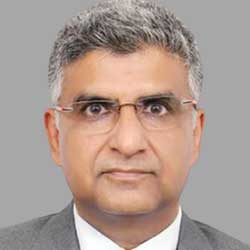
Praveen Sikri
CEO,
Ikris Pharma Network
“In the shadow of the pandemic and the ongoing battle against the virus, the budget should focus on the following areas: first, healthcare expenditure as a proportion of GDP must be raised to at least 2.5% if not more. Second, in view of the rising frequency of infectious diseases, the government must allocate enough resources for genetic and genome research, epidemiological studies besides hiking allocations for general healthcare-related R&D. Third, the budget must also provide for increased investment into infrastructure-building in terms of more critical care and ICU facilities and diagnostic labs along with ambulatory and home care. Fourth, smaller towns and the hinterland too should get sufficient public and private health infrastructure. Accordingly, the private sector should be encouraged with easy and inexpensive loan availability, tax exemptions and other financial and policy support through this budget. Fifth, similar encouragement must also be extended to the pharma and medical device sector. Sixth, the budget should also earmark funds for ramping up infrastructure for medical education and training with an eye on elevating the quality and quantity of our healthcare manpower.”

Dr. Prakriti Poddar
Managing Trustee,
Poddar Foundation
“India’s mental healthcare system had several gaps even before the pandemic, and the situation has been exacerbated by the outbreak of COVID-19. In the last budget i.e. the Union Budget 2021-22, the budget for the National Mental Health Program (NMHP) remained the same as last year – Rs 40 crore. Proposing only INR 40 crore for NMHP will leave the country unprepared and unable to deal with the requirements of the population, especially with the increasing mental health impact of the COVID-19 pandemic. While increasing the budget allocation for NMHP is the need of the hour, other overlapping and related sectors such as social welfare schemes (example – NREGA, one stop centres for survivors of Domestic Violence, scheme for the welfare of persons with disabilities) also require additional funding. It is not just about increasing budgets, unless it is accompanied by engagement with grass-root level mental healthcare. The government must set up counselling centers, drive aggressive promotional health campaigns encouraging people to consult with psychologists and psychiatrists as well as invest in community health physicians and public health professionals to strengthen mental health epidemiology and engagement in preventive care. The government also needs to set up bodies that recognise community level organisations and NGOs working in the mental health space and provide funds to them so that they can continue their work.”
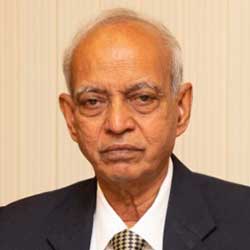
KR Raghunath
Senior Chairman,
Jindal Naturecure Institute
“The need of the hour is to spend more on creating awareness about why preventive healthcare is important, more so with the ongoing COVID-19 pandemic. During the pandemic, PM Modi has given the much-needed push to the AYUSH sector as he encouraged India’s world-class R&D enablement and manufacturing capabilities. We are looking forward to more promising announcements from Budget 2022. Even though COVID is a communicable disease, its worst effects are visible in those with non-communicable diseases– cardiovascular diseases, diabetes, hypertension, obesity and chronic respiratory diseases. Therefore, an allocation only for strengthening communicable disease surveillance is a sub-optimal solution. The budget for up-skilling of the youth to become Preventive Health Coaches is also required since this will address the problem of unemployment and build on PM Modi’s Atmanirbhar mission. We need to consider coming out of this pandemic as a healthier and fitter country. Apart from yoga, the government should promote naturopathy, make it a part of school and college curriculums, and set up a committee to introduce naturopathy practices in universities. Standardizing naturopathy practice is critical as it will enable us to lay down strict standards that have to be adhered to by all Naturopaths and conducting mass awareness campaigns to educate the masses is the right way forward”

Sahil Dharia
Founder & Chief Executive,
Soothe Healthcare
India is at the inflection point of a COVID recovery phase coupled with a ‘demographic dividend’ opportunity. For both reasons – internal of giving jobs to its millions of youth and external to be able to balance emerging geo-political compulsions, India needs to leapfrog to a double digit GDP growth rate.
Accordingly, industry expects meaningful efforts on two fronts– Simplification of Regulation and a Push for Make in India.
Simplification of regulations specially with respect to unlocking Land, Labour & Capital use will create an overall ‘encouraging’ environment for entrepreneurs to take risk and business to thrive given the large domestic opportunity.
Make in India is the pointed edge of that weapon that gives jobs, builds capacity, reduces our fiscal deficit and maybe even helps build technological prowess in time. These are all essential ingredients if India wants to project as a global power.
Flat GST Rate:
A major simplification drive for instance, a flat GST rate will go a long way in creating an impetus for a cyclical bull run in the industry. Moreover, there are anomalies in GST, for example, in the feminine hygiene sector with GST on sanitary pads being ‘zero’ the input tax credit can’t be availed by industry, making the transaction tax inefficient thereby reducing the growth CAGR.
Though manufacturing-based companies in India appreciate no Zero GST on sanitary pads, it is still significantly affected by high raw material and manufacturing costs. Hence, we look for some relaxation in this area.
Government support towards Non- Tech Companies to push Make in India Agenda:
To promote Make in India, the government should encourage more investment in the non-Tech companies. Right now, capital is increasingly being deployed towards Tech companies majorly Fintech. Government investments via e.g SIDBI serves the purpose of crowding capital into a sector which is already getting more than sufficient attention.
Indian entrepreneurs need this support to shift the materials supply chain from China and sell products not only via the internet economy but also offline for easy access to a large population residing in the hinterland of Bharat.
Mortgage Free Loans to Small Entrepreneurs:
Lastly, banks need to reduce formalities and provide small entrepreneurs with loans without a collateral. The CGTSME for instance can be increased from the current max 1 crore to 5 crore and make any MSME business eligible for it. An environment where small entrepreneurs can get loans without having to mortgage any personal asset will drive growth of new businesses as well as expansion of existing businesses and unlock the potential of our robust trading & manufacturing sector.
If we get just a couple of things right, then the momentum we can build in the next decade will be comparable to the ‘great leap forward’ of China in the 90’s and Indian economy will still grow at 5-7% in the coming decade. This can truly solidify India’s position in the global pecking order.
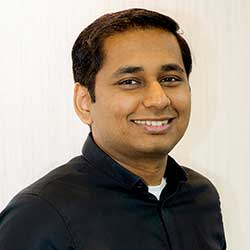
Satish Kannan
Co-founder & CEO,
MediBuddy
“With the insistent surge in COVID-19 cases, it is extremely imperative that the budget focuses on strengthening the medical infrastructure uniformly. It should allocate some funds on developing the telemedicine industry to strategically bridge the disparity and to ensure that accessibility of quality healthcare services increases. Persistent problems that have been a hiccup for several years in the industry could be solved with the help of telemedicine, which holds the potential to solve them with ease. There should also be an emphasis on research and development in various medical fields to strengthen the current standing. Overall, we are expecting to see a rise in fund allocation of 2.5% to 3% of the GDP with regards to the healthcare sector.”
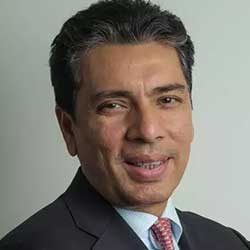
Vishal Bali
Executive Chairperson,
Asia Healthcare Holdings
“ The multiple waves of the pandemic are exposing India’s demand – supply gap in healthcare across infrastructure, people, technology. Budget 2022 must remain focused on increased allocation to the healthcare sector and fast track the bridging of the gap. Public healthcare spending on healthcare needs needs urgent reform and a clear allocation of 2.5% of GDP in real terms and not under a consolidation of allocations to various schemes and depts related to health and sanitation. Strengthing Primary Healthcare both at urban and rural level with allocation and execution should be a key priority to develop the tiered healthcare system of the country. The Govt’s push for financing healthcare infrastructure development can also be aided through the issuance of GOI backed healthcare bonds. Indigenisation of medical technology needs more steps under the Make in India program both for local and international players to make India a manufacturing hub for medical technologies. In addition to this, reinstatement of the weighted deduction for R&D expenditure to encourage innovation of new products and technologies, particularly in the pharmaceutical and healthcare industry should become the need of the hour for the country. Technology enablement has the power to redefine healthcare access in India, last mile connectivity acceleration can create a new power of disease surveillance, population healthcare data management and enablement of healthcare services and products. The Government should also look at accelerating rural internet connectivity to support education and healthcare services. The pandemic has shown that the need for health insurance for the citizens is imperative, to accelerate the penetration of health insurance further the Union Budget 2022 should also introduce a higher provision for tax deduction under section 80D. Budget 2022 should continue the path of transformation of healthcare for India and ensure that it continues to be a national priority “
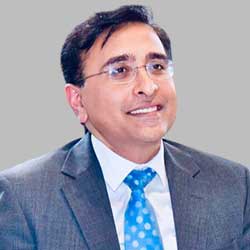
Dr. Shuchin Bajaj
Founder & Director,
Ujala Cygnus Group of Hospitals
“As India faces the worst ever health crisis of all times, we hope that COVID-19 will at least provide the silver lining in increasing the healthcare budget. There has never been a greater spotlight on healthcare delivery in various environments. No election has unfortunately been fought on healthcare as an issue in India yet. But now with the coronavirus pandemic, the focus is only and squarely on healthcare. I hope that this will lead to an increase in the healthcare budget and various healthcare provisions so that the expenditure spend on health should go up to 3 percent of the GDP as promised by the government.”

Dr. Shubhang Aggarwal
Director,
NHS Hospital, Jalandhar
“We are expecting that the upcoming budget under the leadership of Prime Minister Narendra Modi will have a special focus on increasing the healthcare expenditure substantially more than 2.5% of GDP and extending the National Health Protection Scheme for all when the cases of COVID are again on rise. The Ayushmann scheme is becoming a success but the rates need to be rationalised so more private hospitals adopt it, even if its under their CSR activities. There is an urgent need to improve healthcare funding through subsidised loans and allocating land for new hospitals especially in tier 2 and tier 3 cities where quality healthcare is still a challenge. The use of innovative technologies should be incentivised so that health protection is available and extended to the disadvantaged,”

Dr. Tushar Grover
Medical Director,
Vision Eye Centre, New Delhi
“With omicron spreading now and the so-called third wave being finally upon us, healthcare has again become one of the biggest focus areas for governments as well as individuals. As such, the government must raise the healthcare budget considerably at least to the extent that the entire health machinery including our public health systems are prepared to deal with emergency health situations such as the ongoing pandemic efficiently and without much damage to people’s health. Secondly, given the rising frequency of infectious diseases, the government must invest enough through this budget into genetic research, vaccine and immunization research apart from other avenues of research including epidemiology and biotechnology. Thirdly, the private sector whether it is the healthcare providers or the pharma sector must be given policy and economic support in the form of tax rebate, easy loans, utility payment relaxations and exemptions in order for them to grow themselves and make India a self-reliant healthcare power while bolstering the health defences of our people. And fourthly, there is a need to bridge the urban-rural and big town-small town gap in terms of availability of health infrastructure, equipment and personnel. Healthcare services, both public and private sectors need to be strengthened tremendously in rural areas and small towns”
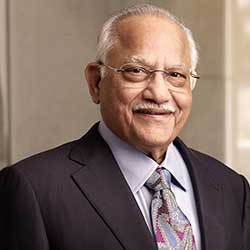
Dr. Pratap C Reddy
Chairman,
Apollo Hospital
“The pandemic has made us realise that for any return to normal growth of the economy, it is healthcare and only healthcare that can form the bulwark for recovery. This needs Health to be made a National Priority. The budget needs to build on the advantageous position that the extensive successful vaccination program has placed us in, where the third wave has seen lesser hospitalisations. It is important to vaccinate the economy too through building and preparing a healthcare infrastructure that lets us face not just any future pandemic but also the current pandemic of non-communicable diseases (NCDs) that we face.”
Apollo ProHealth, first of its kind, provides holistic and comprehensive health programme powered by personal risk assessment enabled by artificial intelligence. It is driven by technology and brings human touch in the form of personalised human mentor.
The future of healthcare has enormous opportunity for India to become a global healthcare destination. India can play a significant role in future of Health Workforce Globally by creating huge number of health work force for India and the world.”
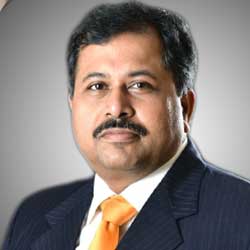
Joy Chakraborty
COO,
P. D. Hinduja Hospital & MRC
The healthcare sector has undergone a significant shift in the recent past. Moreover, the pandemic has highlighted the urgency with which our healthcare system in the country needs to be strengthened. Healthcare infrastructure is the backbone, and is critical for a growing country like India.
While Ayushman Bharat is a great step toward achieving universal healthcare, it should be strengthened so that more poor people get coverage, while at the same time more hospitals must be roped in as partners. Additionally, we need some thought-out incentives and health insurance plans to protect our healthcare workers and their families
Availability of skilled manpower remains a key challenge. The government should expedite the implementation of setting up of medical colleges announced in the earlier budget. To encourage the private sector to take up workforce skilling activities, the government should consider providing tax incentives for expenses incurred healthcare skill development and tax deduction on stipends to professionals undergoing DNB and PG courses at hospitals.
To strengthen the private sector’s health infrastructure, the government should consider offering deductions to healthcare providers for capital investments incurred for fighting the pandemic. There needs to be a stronger collaboration between public and private sector to build more primary healthcare infrastructure. The facilities in public sectors hospitals in smaller towns must be upgraded so that they have adequate supplies of oxygen, ventilators etc.
Digitisation is the future and the National Digital Health Mission has the potential to transform healthcare delivery in the country. It can help solve the problem of quality, affordability and accessibility. To incentive private payers to digitise, tax concessions on investments made in digitisation by private players like EHR, digital technologies for remote care should be provided.
The government should encourage entrepreneurship and start-ups with funding and mentoring, to help develop innovative solutions and newer healthcare delivery models, which is the need of the hour.
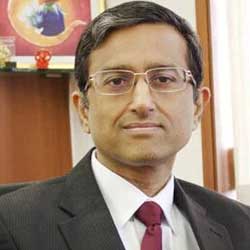
Gautam Khanna
CEO, P. D. Hinduja Hospital & MRC
Co – Chair, FICCI Health Services Committee
President, Association of Hospitals, Mumbai
Though it is indeed commendable how the Indian Healthcare Industry battled the pandemic, the covid crisis has brought to the forefront the serious inadequacies in our healthcare sector and the urgent need to address the same.
One of the key objectives in the current scenario should be to invoke a robust and more promising healthcare infrastructure backed by investments to strengthen hospitals, diagnostic labs, and the home care sector.
Even though the healthcare spends have considerably increased in the last few years, we would still urge the government to increase the healthcare expenditure above 2.5 per cent of the GDP and extend the National Health Protection Scheme to all migrant workers.
Preventive Health Check-ups should be given greater emphasis, given the fact non communicable diseases will account for 75% of India’s disease burden by 2025. Raising the tax exemption on preventive health checks, expedite setting up and operationalising PHCs announced in the earlier budget, and nutritional emphasis in rural areas are some of the steps that can help achieve this.
Several hospitals, big and small, have made significant investments to tackle Covid. We would recommend the benefits of section 35 AD of the Act under capital expenditure, which was extended to hospitals with 100 beds or more should be made available to all hospitals from 01.04.2020. This would also encourage setting up of hospitals / nursing homes in smaller towns / rural areas.
It is also recommended that healthcare industry be treated on par with other industries by bringing it under the definition of Industrial Undertaking under provisions 72 of IT act., which will enable tax losses of healthcare Industry be carried forward and set off against future profits.
As Healthcare was introduced in the harmonised master list of Infrastructure sub sectors by RBI in 2012, long term financing options (as available to other sectors accorded infrastructure status), should be made available to healthcare also, in some form or the other.
Keeping the pandemic experiences in mind, thrust must be given to Medical Research, with private and public sector hospitals supporting government bodies like ICMR.
Healthcare digitalisation has taken a new turn in the pandemic and is the future. As digital technology continues to reform the healthcare industry, policies must ensure that markets remain comprehensive and support access to new and extensive opportunities in this space. This will be beneficial for both the urban and rural population alike.
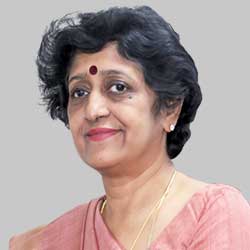
Dr S. Narayani
Zonal Director,
Fortis Hospitals, Mumbai
“Healthcare was one of the first pillars of budget allocation last year and should continue to be an important aspect in this year’s Union Budget as well. Since the pandemic hit us, we have seen the need for and importance of an even stronger healthcare sector in India. We need to pave the way for more Public-Private-Partnerships (PPP). Secondly, there has been a growing concern for healthcare infrastructure in India which can be addressed with increased budgets in Research & Development, medical equipment procurement, development of more hospitals, and improving the overall infrastructure. In India there is a lack of a skilled healthcare workforce, a dedicated budget should be allocated to address the need to create sufficient manpower and for skill development of paramedical staff, nurses, etc. Focusing on healthcare and meeting these needs will help us prepare for years to come.”
MB Bureau












